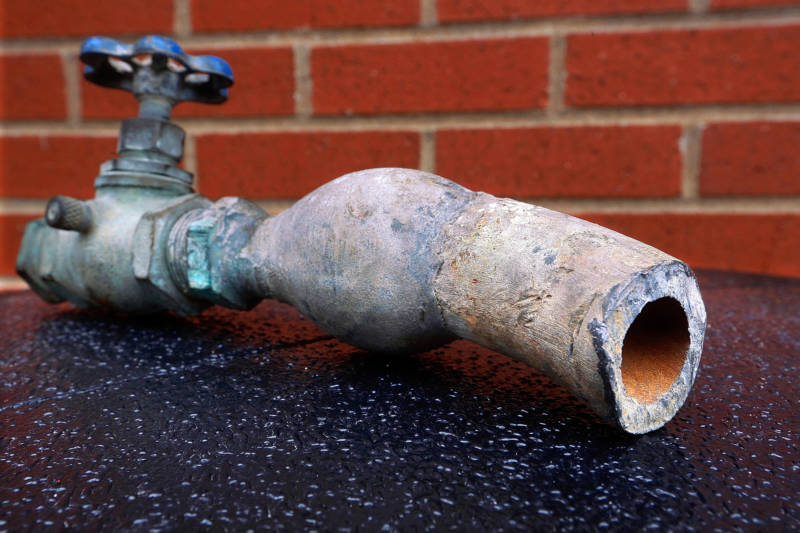Until the 1970s, lead was a common additive in gasoline and household paints. But now, scientists agree that no amount of lead in a child's blood is considered safe.
In kids, even low levels of lead exposure can cause behavior and learning problems. In adults, it's associated with high blood pressure and kidney problems. And there's evidence it can affect a developing fetus.
Corrosive water running through lead pipes in Flint, Mich., led to a public health crisis — signaled in part by a rise in the amount of lead in children's blood. Conditions in Flint were particularly disastrous, but lead pipes continue to bring water to homes in much of the country. And wherever lead plumbing is in place, there is a risk that small amounts of the metal could leach into drinking water.
The main source of lead in domestic drinking water is the service line. It's like a straw that carries water to the house from the main, and it can be pure lead. (If it isn't made of lead, it might be soldered together with lead or connected to brass fixtures containing lead.) And in many cities, most of the service line is considered private property – the homeowner's responsibility.
Anti-corrosive chemicals can reduce the amount of lead leaching into the water, but they can't stop it entirely. Lead can still flake off from pipes or soldering in tiny pieces and end up in drinking water, especially when it sits in pipes for more than a few hours. Other things can shake lead free, like construction or heavy trucks driving down the road.

9(MDAxOTAwOTE4MDEyMTkxMDAzNjczZDljZA004))